How to Introduce Someone to Shooting (And Get Them to Come Back)

Taking someone shooting for the first time is a huge responsibility. How you approach the situation can mean the difference between a confident, safe shooter with a healthy respect for firearms and someone who puts themselves and others at risk.
But don’t be intimidated. With a little bit of planning and an intentional approach, you can take this opportunity to help them build a solid foundation of shooting skills and even have some fun while you’re at it.
When teaching a new shooter, it’s important to keep things simple at first. Starting with a smaller caliber, emphasizing safety, and covering the fundamentals of proper grip, stance, and trigger discipline can ensure the experience is both productive and enjoyable.
Below, we’ll share some tips and tricks for a successful introduction to the wonderful world of guns and ammo – no matter who you’re teaching.
Start by Talking About Safety
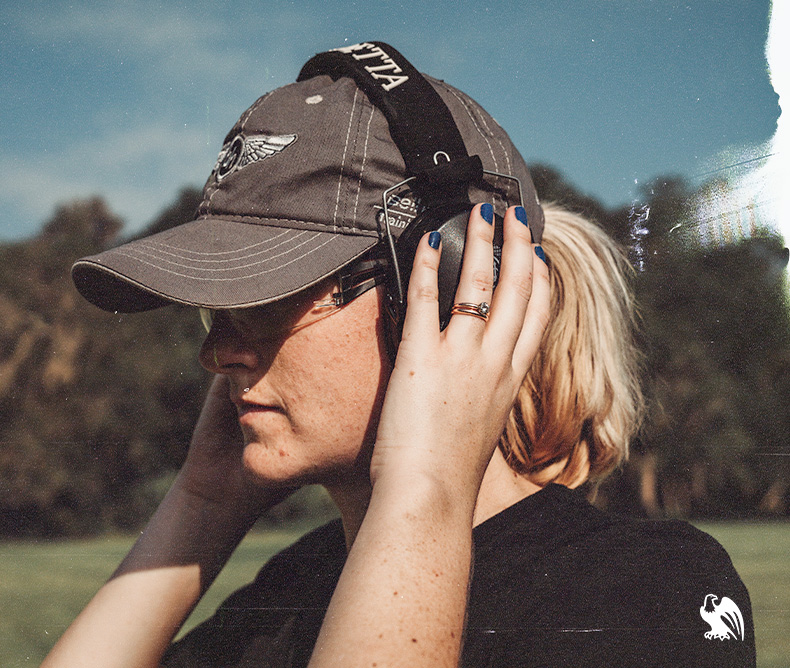
Before you do anything, and I mean anything, when introducing a person to firearms, you need to talk about safety. Don’t even remove your gun from its case before doing so. Start here. No exceptions.
Above all else, you’ll want to cover the four fundamental rules of gun safety. Be sure to stress with your friend just how crucial it is that they follow these rules at all times, no matter what.
In case you need a refresher, here are the four rules of gun safety:
- Treat every gun as if it is loaded – even if you know for sure that it’s not.
- Never point a firearm at anything you aren’t willing to destroy. That includes when you’re holstering it, loading it, and using it for demonstration purposes.
- Be absolutely sure of your target and know what lies beyond it. Make sure nothing is behind or near your target that you wouldn’t want to hit.
- Keep your finger off the trigger until you are ready to fire. Once your sights are confirmed, you are pointing at something you want to shoot, and you are sure of what lies beyond your target, only then you can move your finger to the trigger.
Beyond teaching the four rules of gun safety, make sure to bring an extra pair of ear and eye protection and make sure they know what to wear to the gun range to avoid any unnecessary hazards.
Introduce Them With a Smaller Caliber
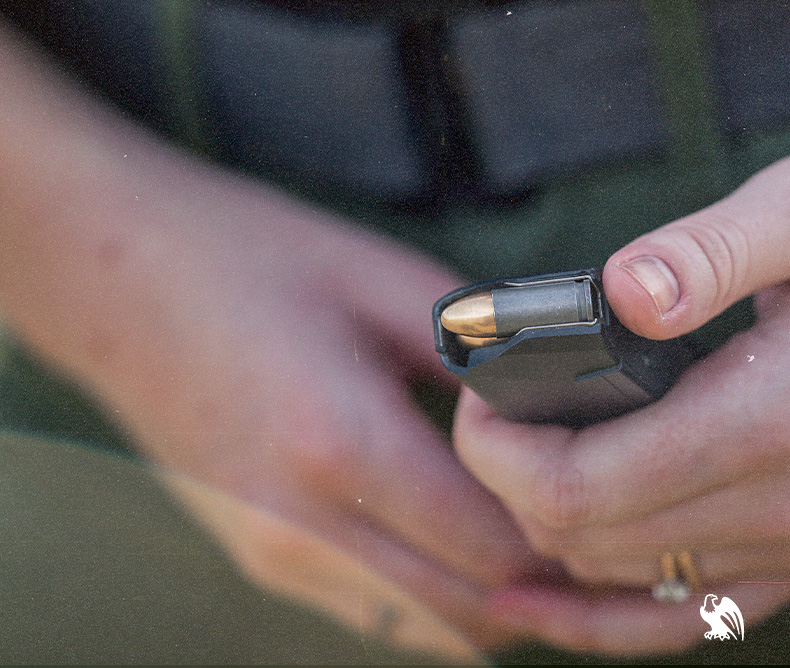
Although plenty of us were introduced to shooting as kids by an old school grandpa with a Colt 1911 and a 12-gauge and turned out just fine, that doesn’t mean it’s necessarily the best choice for a new shooter. Although you won’t hear me argue that higher-caliber guns are a lot of fun to break out at the range, they can be a bit intimidating for a first-time shooter, especially one who’s already feeling nervous or hesitant.
My advice is to save these bad boys for another time and start with something small like a .22LR. After all, a new shooter will just be plinking anyway until they can master their grip, stance, and aim. A lower-caliber gun is also going to be quiet and easy to control with little to no kickback. Plus, it’ll be a little easier on your wallet. ?
The bottom line is that a higher-powered firearm could, at best, result in some bad habits like flinching right out the gate or, at worst, scare a new shooter away entirely. It’s better to err on the side of comfort at this stage so you can focus on developing their most basic skills. There will be plenty of time for bigger guns later on.
Cover the Basics
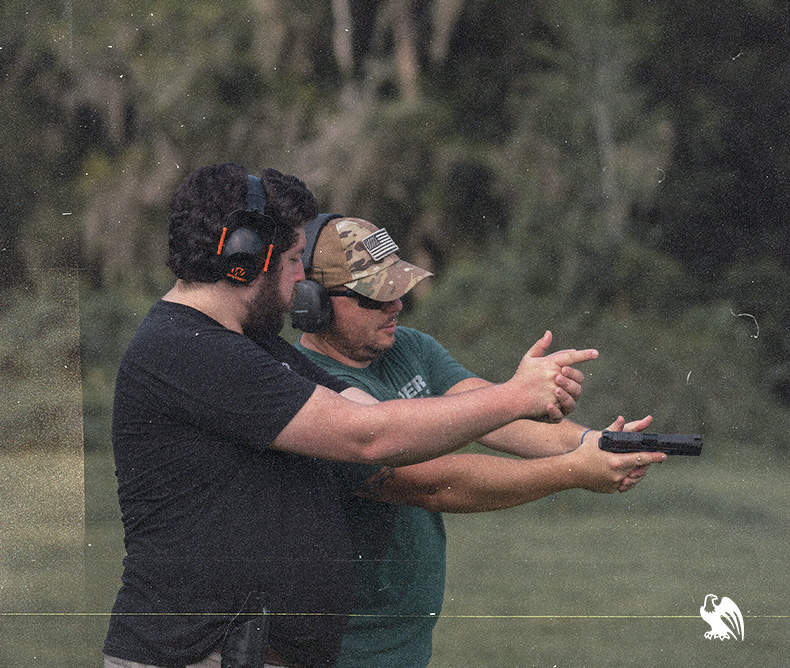
Although there should be no expectation of mastering these skills during their first visit to the range, it’s important to teach a new shooter the fundamentals of shooting. After all, this experience will be the foundation of their shooting journey, and you want to start them out with good habits. That said, try to keep it simple. Thoroughly cover the basics without getting too technical – unless they have more specific, in-depth questions (then feel free to geek out).
Grip
You’ll want to start by teaching them how to hold a gun and get them comfortable with the way it feels in their hands. Whether rifle or pistol, the way a person grips a firearm is by far one of the biggest determinants of how safe, comfortable, and accurate their shooting will be. Make sure to teach them proper grip techniques!
Stance
As every seasoned shooter knows, your stance – including your foot placement, posture, and body angle – is a critical element in successful shooting. There are a variety of different shooting stances, and we could debate all day about which is the best, but the important thing is that the shooter is positioned in a way that’s comfortable, stable, and technically correct. You can teach them the stance that you typically use, and if it’s not working for them, try something else.
Aim
Without understanding proper sight alignment, any new (or old) shooter is really going to struggle. Successfully hitting the target is the most rewarding part of shooting, and is obviously the entire point of even going to the range in the first place. So, teaching someone new to the sport how to properly line up their sights, align them with the target, and keep their breath and body steady as they pull the trigger is a crucial element in their initial and ongoing training.
Trigger
It’s important that your new shooter knows there’s more to pulling a trigger than just, well, pulling it. Concepts like trigger discipline (keeping your finger off the trigger until you’re ready to shoot), proper finger placement on said trigger, and practicing trigger reset are all good habits you should instill right off the bat. They’ll thank you later.
Follow-through
Once the shot is fired, most new shooters think they’re done. It’s important to teach them that after they’ve pulled the trigger, there are a few additional actions they need to take. First, if they plan to fire more shots, they need to keep their eyes on the target to hang onto that sight picture and repeat the above steps.
Once they’re done shooting, you don’t want them to whirl around with the gun in their hand to talk to you, or even dash up to the target to see if they hit their mark. Teach them to keep their weapon pointed down range, safely set it down or re-holster it, and then verify that the range is cold before walking down to check their target.
Keep it Fun
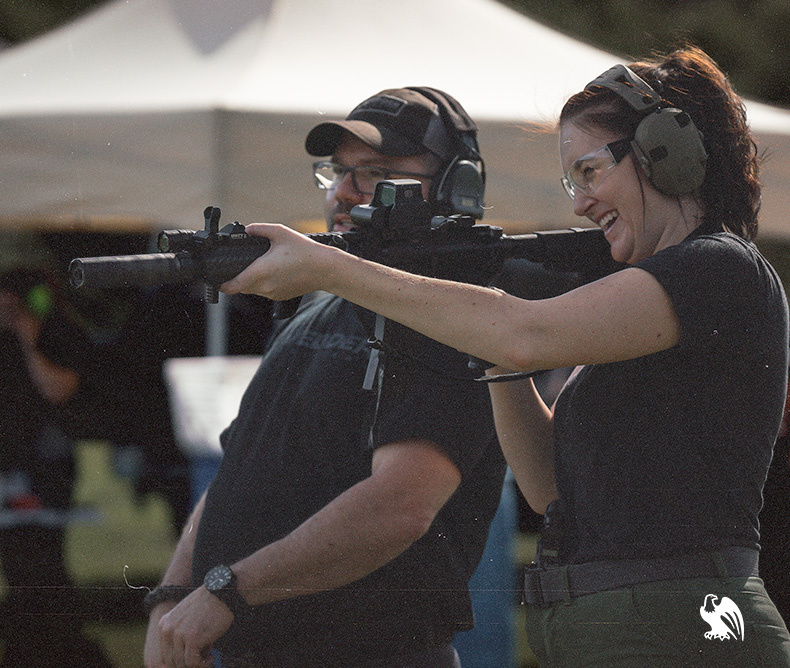
Although shooting is a dangerous sport and one you definitely want to take seriously, you also want to make sure your new potential range buddy actually wants to come back.
Keep in mind that “fun” will depend on who you’re with. Some people will be instantly hooked the first time they pull a trigger, and will probably be excited to shoot all of the guns in your arsenal as soon as possible. Others may still be a little hesitant, and you might want to stick with plinking until they get comfortable with the idea of handling a firearm. Never push a new shooter to do something they’re not yet comfortable with.
No matter what kind of new shooter you’re dealing with, try to get on their level. Pull out some fun targets to shoot at, and get excited with them when they hit their mark. Give them pointers here and there without making them feel bad. Answer their questions without being condescending. Basically, just be nice and have fun!
Resources for New Shooters
While nothing can take the place of in-person education and hands-on practice with a firearm, many new shooters may find it helpful to do some post-range research as a refresher. Below are a few beginner-friendly articles that a newbie may find helpful if they want to learn more about firearms.
- Complete List of Firearm Terminology: Everything You Need to Know If You’re New to Guns
- How to Shoot Responsibly: 4 Rules of Gun Safety
- How to Hold a Handgun
- How to Pull a Trigger
- What to Wear to a Gun Range
- How to Clear a Jammed Gun
- What Is A Double Action vs. Single Action Handgun?
If they want to learn beyond the basics of shooting and are interested in concealed carry, our free e-book “The Concealed Carry Blueprint,” is an excellent resource that covers everything from choosing a handgun for CCW, getting a carry permit, tips for training, and much more.
Summary
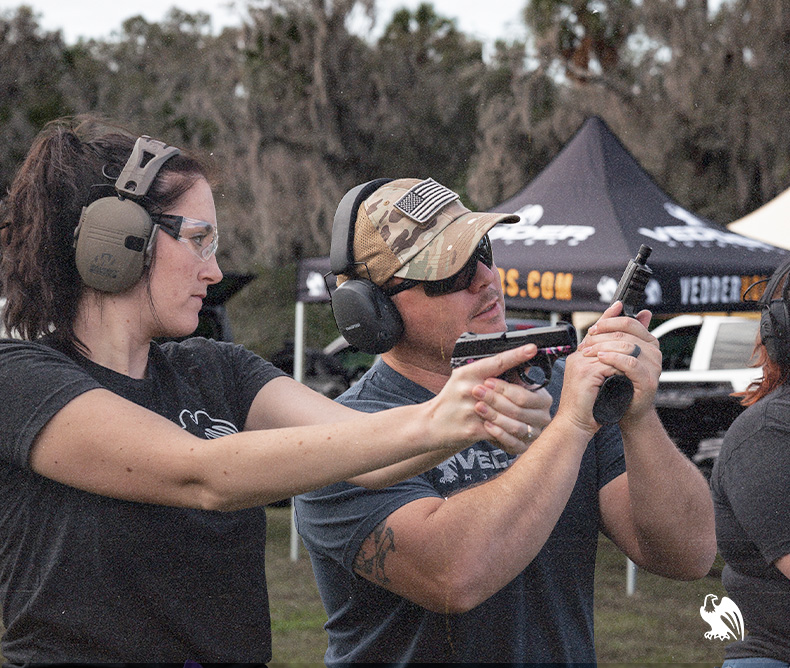
Introducing someone to shooting is both an honor and an opportunity that you should take seriously, and it requires a bit of planning ahead to do it right. By keeping things simple and starting with the basics like safety, proper sight alignment, and a solid grip, you can ensure they walk away with not only a solid foundation for shooting but a new hobby as well.
If you’re in need of a new IWB, OWB, or pocket carry holster, head to our Holsters by Gun Model page for Kydex holsters that are custom-made for your weapon of choice.
Interested in items beyond holsters? Take a look at our Resources Page for links to recommended products like lights, lasers, first aid, maintenance, and more. Or, browse our selection of apparel, gun belts, and accessories. And be sure to visit our sister company, GeoGrit, to view our collection of durable, RFID-blocking minimalist wallets.
To stay up-to-date on all the latest Vedder Holsters content and offerings, follow us on Facebook, Instagram, Twitter, YouTube, and TikTok. For more shooting and concealed carry resources, check out our blog or download our FREE e-book “The Concealed Carry Blueprint.” To discover which states honor your carry permit or to learn about CCW laws across the U.S., explore our interactive Reciprocity Map.
*This page contains affiliate links. When you purchase a product included on this list, we receive a commission at no extra cost to you.

